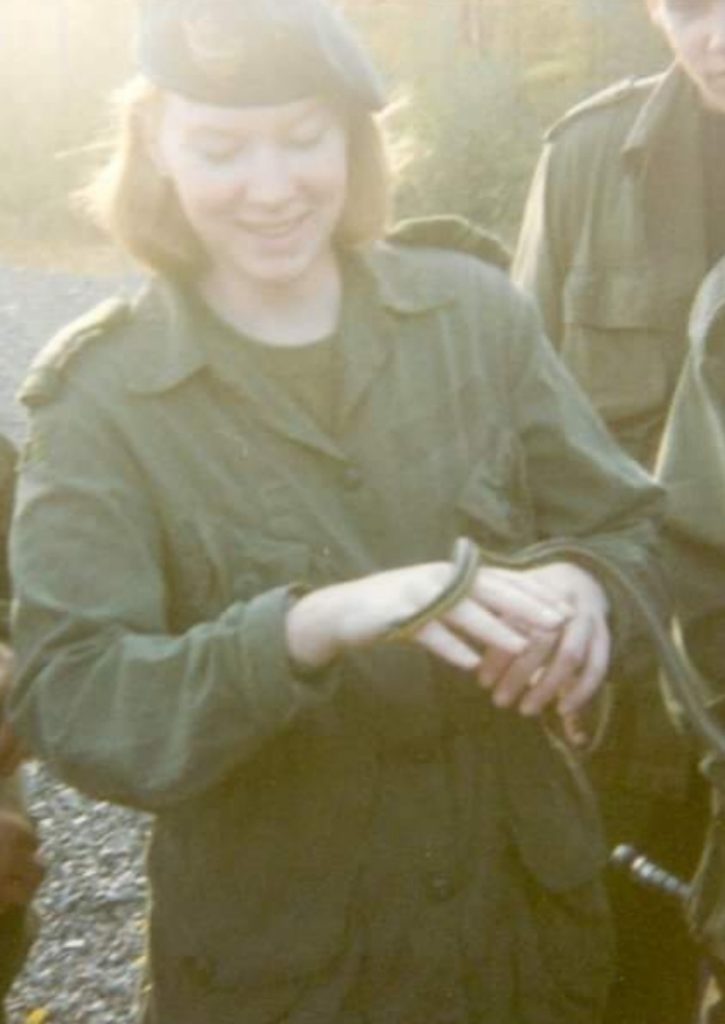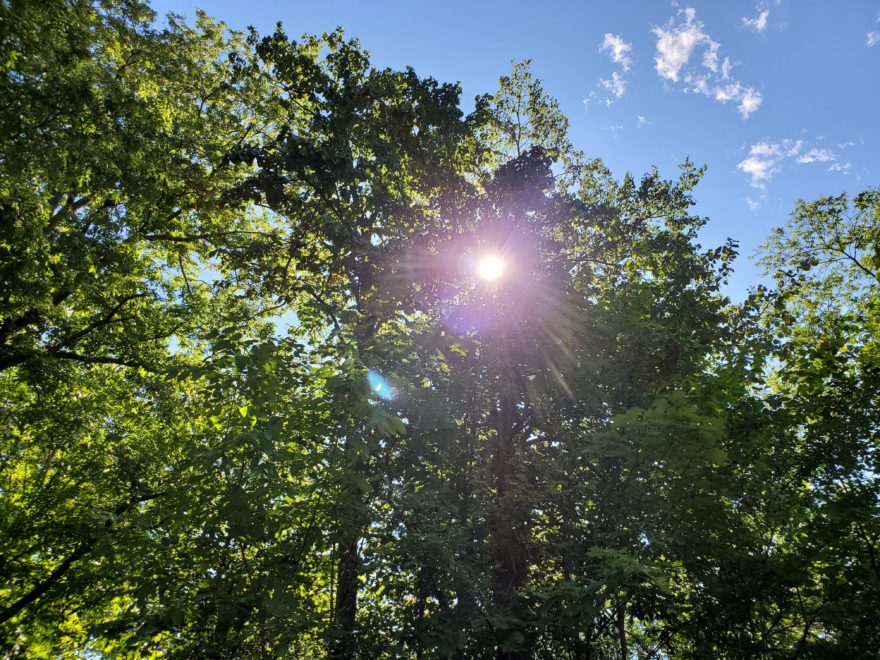Over the next little while I’ll be posting information from the 3-day conference of the Pain Society of Alberta, which ran from Friday October 16 through the weekend to Sunday October 18. One of the advantages of this virtual event being held mostly during a weekend is that I could, in theory, attend most of the presentations.
In theory, because a mild cognitive impairment makes it impossible for me to follow these talks for much more than an hour at a time. I’ve tried to schedule my weekend to be able to attend the sessions that were most important to me, but that doesn’t always work out because my brain fades out before the end of the 2-hour sessions.
I’ve already posted about the two talks presented by Dr. Norman Doidge on Friday, as well as on a part of this morning’s session. This is part two of the session from this morning. For anything that I post about this conference, please bear in mind the following disclaimer from the Pain Society of Alberta:
The Pain Society of Alberta does not provide any medical advice.
If you are seeking medical support, please contact your family physician.” (1)
Missed one
Remember how I mentioned that I sometimes wasn’t able to attend even the sessions that I’d planned to see? This one’s an example! The second talk in the Saturday-morning session on “What’s New in Pain” was given by Dr. Hance Clark with the title: “Managing Cannabis in the Perioperative Period” (1).
I missed most of this presentation, because by this point in the morning my brain needed a bit of a rest break. Dr. Clark is the Director or the Transitional Pain Program at the Toronto General Hospital. You can follow him on Twitter at @drhaclarke.
He noted that cannabis has been used in research and treatment for a wide range of pain conditions, including different forms of arthritis, Amyotrophic Lateral Sclerosis (ALS), cancer pain, Multiple Sclerosis (MS), gastrointestinal pain diseases, lupus, migraine, and more.
Most of Dr. Hance’s talk was, I believe, based on his July 2020 research paper “Daring discourse – Yes: Practical considerations for cannabis use in the perioperative setting” in the medical journal Regional Anesthesia & Pain Medicine (2).
Pain and illusions
The next speaker in this session was Dr. Tasha Stanton (@Tash_Stanton over on Twitter). The title for her discussion was intriguing: “Targeting Pain from Many Angles: A Foray into Language, Sensory Modulation, and Brain Trickery” (1).
She explained that research involving people with osteoarthritis has shown that illusions – tricking the brain – can actually alter the level of swelling in a patient’s knee. Since swelling is one of the many painful symptoms of CRPS, I immediately wondered whether this research could be applied to those of us with this much rarer disease…
Dr. Stanton’s talk included an interesting comment to the effect that a person’s expectation of pain can change their actual performance – for example in competitive sports.
If you’d like more information about this, she and her colleagues published a medical journal article last year: “The effect of knee resizing illusions on pain and swelling in symptomatic knee osteoarthritis: a case report” (3).
CPN pain plans
The final presentation in this session was by Dr. Norm Buckley, who spoke about two different Canadian chronic pain organizations with which he is involved. The first he discussed was the Chronic Pain Network (CPN), founded in 2016 with government funding and housed within the McMaster University Medical Centre in Hamilton, Ontario:
The Chronic Pain Network is one of five networks to receive funding through the Canadian Institutes of Health Research’s Strategy for Patient-Oriented Research (SPOR) and represents an unprecedented level of collaboration amongst national stakeholders.
Working with patients as partner, the Network supports, coordinates and synchronizes leading innovative and high-impact research with the ultimate goal of removing barriers to better chronic pain management.” (4)
For the CPN, Dr. Buckley noted that there are problems with current policies in place – or being developed – in certain provinces requiring that opioid medications be tapered. He specified that it is not the medications being tapered; it is patients who are being tapered off of them.
This is occurring even for patients for whom opioid medications are providing a clear benefit, generally people living with chronic pain conditions. He made it clear that these policies ‘have left patients behind’.
In describing some of the future plans of the CPN, Dr. Buckley mentioned several that seem particularly interesting to me from both my bioethics and pain Patient Partner (in research) perspectives:
- Improving patient engagement in research
- Creating a national network of clinical research sites
- Setting up a Pain Patient Registry (my province, Quebec, already had this type of registry but it was abandoned when our local funding fell through)
- Organizing the collection of biomarkers for pain, at a national level, combining both the planned research network and the planned patient registry
From a bioethics perspective, I’ll be very curious to see the informed consent documentation and plans for the collection and potential sharing of pain biomarkers and patient data. Where will this biologic material and data on Canadian patients be stored and protected?
If these research data are linked to some form of national registry, which province’s health privacy laws will be applicable; the province in which the material or data was collected, where the patient currently resides, or where the biologic material and/or data is stored?
In terms of patient concerns, some of mine would be about which types of organizations would be able to access this data and/or biomarkers; would access be limited to academic and other non-profit research centres, or would private companies also be able to access my data or biomarkers?
Would there be any possibility of my identity being discovered from de-identified data, by using the biomarker information that would be linked to my file within a patient registry?
We’ll just have to wait and see… These were just a few questions off the top of my head, so I’m sure others will crop up as these projects progress – and as more Canadian chronic pain patients become aware of them.
Veterans in pain
The second organization in Dr. Buckley’s presentation was the one dearest to my heart, as a former Royal Canadian Air Force Reserve officer with many family members and friends who are either still in the military or are also veterans. This second organization is the brand-new Chronic Pain Centre of Excellence for Canadian Veterans, founded with
$20 million in funding from Veterans Affairs Canada over 5 years, the Chronic Pain Centre of Excellence for Canadian Veterans will be a world leader in veteran-first chronic pain research and care.” (5)

I’ll start with some of the facts presented by Dr. Buckley as part of this portion of his talk:
- Veterans have twice the incidence of chronic pain as compared to the general public
- Half of female veterans in Canada live with chronic pain
- Veterans have 2 to 3 times the rate of chronic health conditions than others
In other words, many of our veterans live with pain on a daily basis. They also face significant barriers to healthcare and pain management, in part because when a person transitions out of the military they lose their access to the healthcare that had been provided to them by the military.
They have to hope to find a family physician, for example, and to have their medical files transferred. New veterans with pain conditions have to try to get referrals to specialists – an almost impossible task in Canada for anyone who doesn’t have a primary care physician.
Added to these challenges is the fact that Canadian ‘primary care physicians receive insufficient ‘pain management education’. Another barrier to care is that physiotherapy usually isn’t funded by provincial healthcare plans.
I can attest to that, having spent well over $25,000 on physical therapy for CRPS since 2016. That’s my own severe pain condition; Complex Regional Pain Syndrome.
Dr. Buckley noted that ‘there are no more interdisciplinary pain management clinics now than 12 years ago’, which is discouraging. I’m very lucky to have been referred to – and accepted as a patient at – the world-class multidisciplinary pain management unit at the McGill University Health Network (MUHC). Many patients living with chronic pain, however, never have access to this type of specialized care.
This, by the way, is why I’ve focused my own CRPS and chronic pain awareness activities on healthcare professionals; drawing on my background in bioethics and my military train-the-trainer experience. For example, I’ve presented to medical students at the MUHC and to residents and fellows at other hospitals.
Session wrap-up
The moderator for these Saturday morning talks was Dr. Rob Tanguay, and I was thrilled when he specifically state allodynia as being ‘a complex phenomenon’ during the closing wrap-up for this session. This is a very specific type of pain symptom, which plagues a high proportion of CRPS patients.
Also during the wrap-up, Dr. John Pereira – about whose talk I posted earlier – mentioned the positive impact of nature on pain. I’ve long felt that outdoor sports are an important facet of my CRPS pain management plan; the combination of nature and exercise has been important in helping me deal with my own pain, and my well-being.
By this point, my cognitive impairment had fully kicked in, so I again had to step away from this conference. Perhaps not surprisingly, I went for a nature walk! I’d attended parts of the sessions that ran from 0800 to 1045 in Alberta, which was from 1000 to 1245 here in Montreal. I then had to miss the sessions scheduled from 1045 through to 1545 in Alberta, which were all on migraine and headache, covering both treatments.
As with the conferences, my brain is now about to shut down, so I’ll try to provide an update tomorrow on the last session of today’s conference agenda; “Culture and Communication” in chronic pain care and pain management.
References
(1) Alberta Pain Society. 14th Annual Pain Society of Alberta Conference. 16-18 Oct 2020. Webpage. Accessed 17 Oct 2020:
https://www.painab.ca/2020virtualconference
(2) Clarke H, Roychoudhury P, Ladha KS, et alDaring discourse – yes: practical considerations for cannabis use in the perioperative settingRegional Anesthesia & Pain Medicine 2020;45:524-527. [See also a correction dated 01 Nov 2020.] First page available (free) online:
https://rapm.bmj.com/content/early/2020/05/28/rapm-2020-101521
(3) MacIntyre E, Sigerseth M, Pulling BW, Newport R, Stanton TR. The effect of knee resizing illusions on pain and swelling in symptomatic knee osteoarthritis: a case report. Pain Rep. 2019;4(6):e795. Published 2019 Nov 21. doi:10.1097/PR9.0000000000000795. Online:
https://www.ncbi.nlm.nih.gov/pmc/articles/PMC6903346/
(4) Chronic Pain Network (at the McMaster University Medical Centre). Welcome to the Chronic Pain Network. Webpage. Undated, accessed 17 Oct 2020. Online:
https://cpn.mcmaster.ca/
(5) Chronic Pain Centre of Excellence for Canadian Veterans. What we’re about. Webpage. 2020. Accessed 17 Oct 2020. Online:
https://www.veteranschronicpain.ca/

